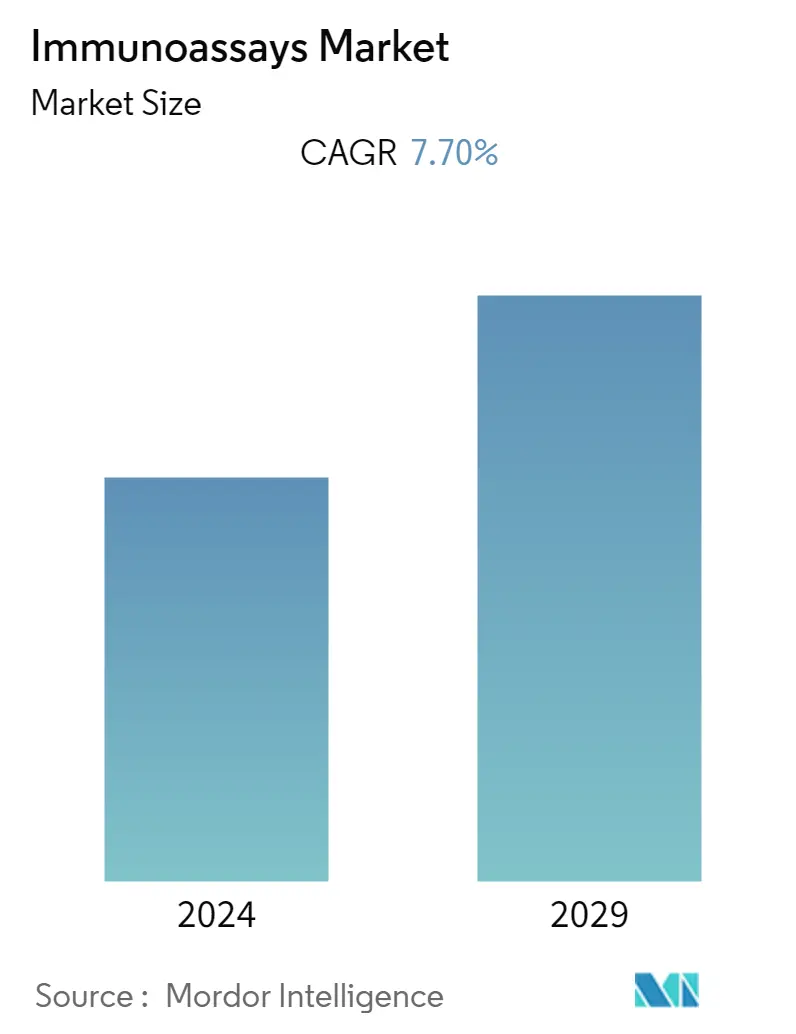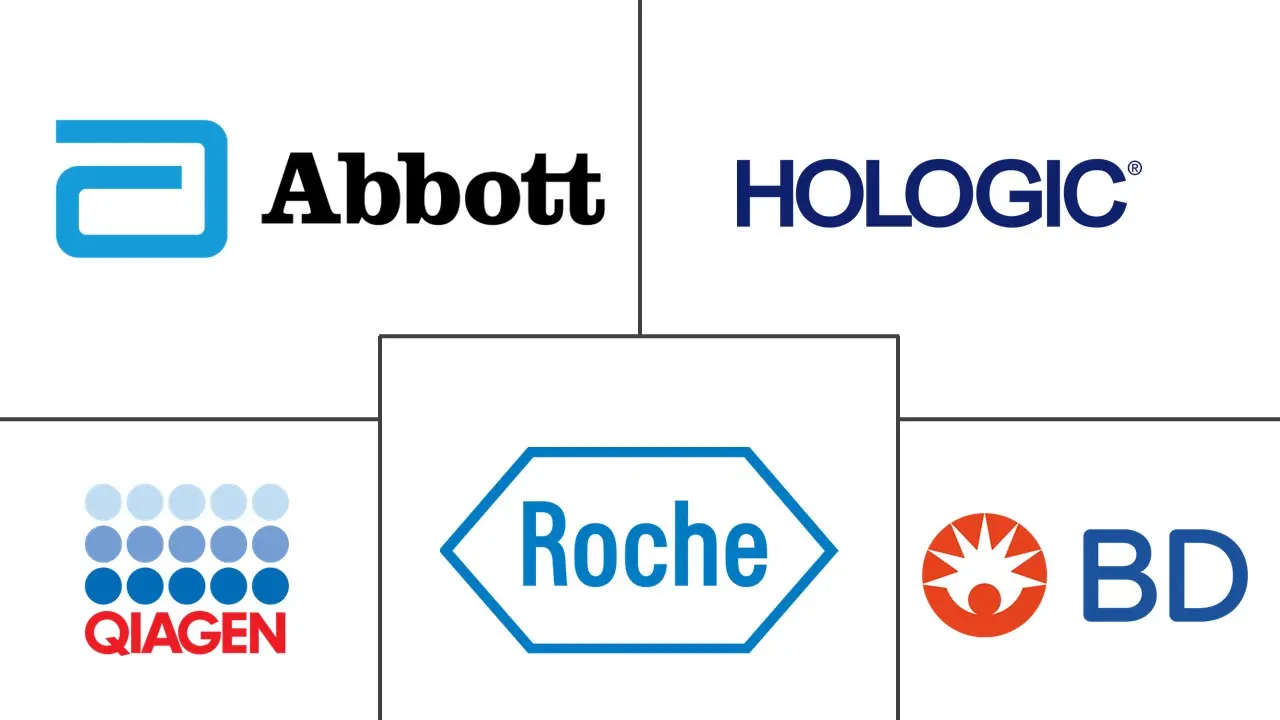Market Size of Immunoassays Industry

| Study Period | 2021 - 2029 |
| Base Year For Estimation | 2023 |
| Forecast Data Period | 2024 - 2029 |
| CAGR | 7.70 % |
| Fastest Growing Market | Asia Pacific |
| Largest Market | North America |
Major Players
*Disclaimer: Major Players sorted in no particular order |
Need a report that reflects how COVID-19 has impacted this market and its growth?
Immunoassays Market Analysis
The Immunoassays Market is projected to register a CAGR of 7.7% during the forecast period.
During the COVID-19 pandemic, the need for diagnostic solutions for the accurate and rapid diagnosis of SARS-CoV-2 infection increased significantly. In particular, serological and immunological testing of infected asymptomatic and symptomatic individuals was in high demand. Though RT-PCR for the detection of COVID-19 disease was widely used there was also a great demand for immunological assays. The results provided by immunological tests play an important role in the development of the COVID-19 vaccine, which also increased the need for immunoassay testing. Furthermore, post-pandemic, immunoassays are still in demand due to their significance in the development of vaccines and the diagnosis of various diseases. For instance, according to the article published in 'SelectScience' in January 2021, the use of vaccines as immunotherapies for various disorders, such as some malignancies and Alzheimer's disease, has led to increased development of advanced immunotherapies. This has led to increased adoption of immunoassays during the testing of immunotherapies, driving market growth.
The major factors that are driving the market growth include the rising prevalence and incidence of chronic as well as infectious diseases along with the technological advancements in immunoassay instruments and the high sensitivity and specificity of the immunoassays. Immunoassays are also suitable for diagnosing asymptomatic diseases, which otherwise cannot be diagnosed. The ultrasensitive immunoassay has been proven to detect HIV and is demonstrated to detect limits of less than 1fg/ml. This high sensitivity helps to detect one virus particle per 25 μl of the sample. The versatile applications and ease of automation have made immunoassay quite popular which is supporting the market growth.
The rising number of people affected by these infectious diseases is further contributing to the market growth. According to the WHO's key facts on HIV published in July 2022, around 38.4 million people around the world were affected by HIV in 2021 with around 1.5 million new cases being registered in 2021 alone. Therefore, the rising number of infectious diseases is expected to drive market growth due to the increased adoption of immunoassays for the diagnosis of infectious diseases.
Besides, the launch of products by the key market players is also aiding in the growth of the market. For instance, in November 2021, Boditech Med launched its new automated immunoassay analyzer with a blood collection tube, including an all-in-one cartridge system, at MEDICA 2021. The immunoassay analyzer, AFIAS-10, is a unique integrated Sample-to-Answer system that can execute 10 parallel tests for each different parameter. Such progress in immune analyzers is expected to propel the growth of the market over the forecast period due to the increased adoption of parallel testing of different parameters at once.
Thus, the high sensitivity, specificity, and cost-saving nature of immunoassays are driving the growth of the immunoassays market. However, factors, such as complex assay procedures and stringent regulatory scenarios for the approval of immunoassays, may hinder market growth.
